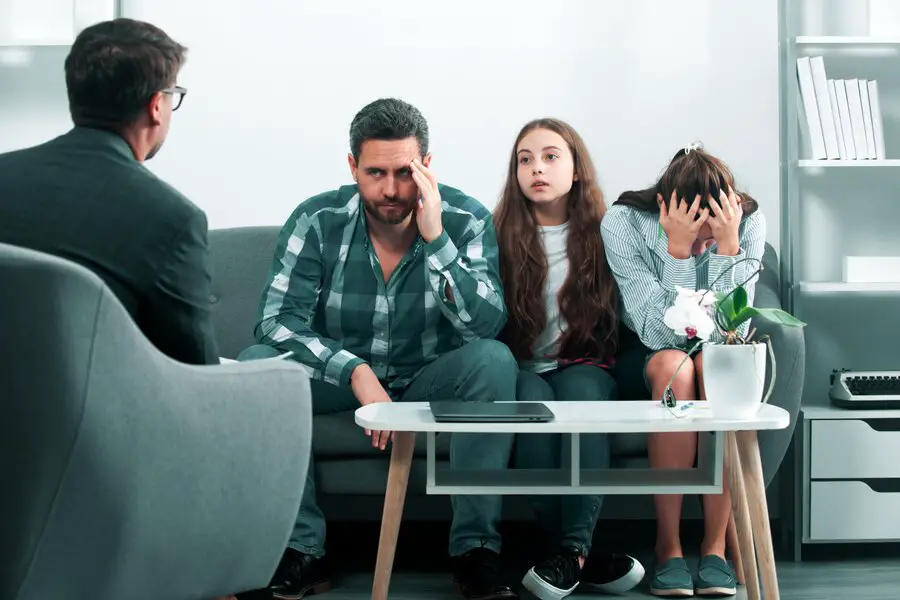Navigating Physical Abuse in Marriage Counseling: Effective Therapeutic Approaches and Strategies

Introduction: Marriage counseling is a valuable resource for couples facing challenges in their relationship, including issues of physical abuse. When one partner exhibits physically abusive behavior, it creates a profound imbalance of power and safety within the relationship, necessitating specialized therapeutic approaches. In this article, we explore the best therapeutic strategies for addressing physical abuse in marriage counseling, with a focus on promoting safety, accountability, and healing for both partners.


Page Contents
Defining Physical Abuse
Physical abuse involves the use of force or violence to intimidate, control, or harm the other person. It can take various forms, including hitting, slapping, kicking, or any other form of physical harm. Physical abuse is a serious issue that can have severe consequences for the victim’s physical and emotional well-being and requires prompt intervention to ensure safety and prevent further harm.
Creating a Safe Environment
Establishing a safe and supportive therapeutic environment is paramount when addressing physical abuse in marriage counseling. The therapist must prioritize the safety of the victim and ensure that both partners feel heard, respected, and validated. This may involve implementing safety protocols, such as providing a private space for individual sessions and offering referrals to support services for victims of domestic violence.
Cognitive-Behavioral Therapy (CBT): CBT can be effective in addressing the underlying beliefs and thought patterns that contribute to the abusive behavior of the husband. The therapist helps the abusive partner recognize distorted thinking patterns, challenge irrational beliefs about power and control, and develop alternative ways of managing conflict and stress.
7 Therapeutic Approaches
- Safety Assessment and Planning:
- Prioritize the safety of the victim by conducting a thorough safety assessment to determine the level of risk and the presence of immediate danger.
- Develop a safety plan in collaboration with the victim, outlining strategies for seeking help, accessing support resources, and ensuring physical safety in times of crisis.
- Individual Counseling:
- Offer individual therapy for both the abusive husband and the victim to address their respective needs and experiences.
- For the abusive husband, individual counseling provides an opportunity to explore the underlying causes of his violent behavior, such as unresolved trauma, anger management issues, or learned patterns of aggression.
- Couples Counseling:
- Facilitate joint sessions where both partners can openly discuss the impact of the abuse on their relationship and work towards healing and reconciliation.
- Couples counseling aims to foster empathy, accountability, and constructive communication between the partners while addressing power imbalances and promoting mutual respect.
- Anger Management and Conflict Resolution:
- Incorporate anger management techniques and conflict resolution strategies into therapy to help the abusive husband learn alternative ways of expressing anger and resolving conflicts.
- Teach the couple effective communication skills, such as active listening, assertive communication, and using “I” statements, to facilitate productive dialogue and prevent escalation of conflicts.
- Trauma-Informed Care:
- Adopt a trauma-informed approach to therapy that acknowledges the impact of past trauma on both the abusive behavior and the victim’s psychological well-being.
- Provide trauma-informed interventions, such as mindfulness practices, grounding techniques, and emotion regulation skills, to help both partners cope with the emotional aftermath of the abuse.
- Behavioral Contracts and Accountability:
- Establish behavioral contracts with the abusive husband, outlining clear expectations regarding his behavior and the consequences of further violence.
- Hold the abusive husband accountable for his actions by regularly reviewing progress, addressing lapses in behavior, and reinforcing positive changes.
- Referral to Support Services:
- Connect the couple with community resources and support services, such as domestic violence shelters, legal aid organizations, and support groups for survivors of abuse.
- Collaborate with other professionals, such as law enforcement officers, social workers, and healthcare providers, to ensure a comprehensive and coordinated response to the abuse.


Let’s provide examples for each therapeutic approach within the context of marriage counseling with a physically abusive husband:
- Safety Assessment and Planning:
- Example: The therapist conducts a thorough safety assessment with the victim to identify potential risks and develop a safety plan. The plan may include strategies for accessing emergency services, establishing a code word for signaling danger, and identifying safe places to go in the event of an escalation.
- Individual Counseling:
- Example: The physically abusive husband engages in individual therapy to explore the underlying factors contributing to his violent behavior. Through therapy, he may uncover unresolved trauma from his past, such as experiences of childhood abuse, which have influenced his patterns of aggression within the relationship.
- Couples Counseling:
- Example: In couples counseling, the therapist facilitates a dialogue between the abusive husband and his partner, allowing both to express their perspectives and experiences. The therapist helps the couple understand the impact of the abuse on their relationship dynamics and collaboratively develop strategies for rebuilding trust and fostering mutual respect.
- Anger Management and Conflict Resolution:
- Example: The therapist teaches the couple techniques for managing anger and resolving conflicts constructively. They practice using “I” statements and active listening skills to express their needs and concerns without resorting to aggression. Through role-playing exercises, the couple learns to navigate disagreements in a respectful and nonviolent manner.
- Trauma-Informed Care:
- Example: The therapist adopts a trauma-informed approach, recognizing the impact of past trauma on both partners’ behavior and emotional well-being. They provide the victim with coping strategies for managing triggers and flashbacks, while helping the abusive husband understand how his own trauma history may contribute to his abusive tendencies.
- Behavioral Contracts and Accountability:
- Example: The therapist works with the couple to establish a behavioral contract outlining expectations for the husband’s behavior and consequences for further violence. The contract may include commitments to attend anger management classes, refrain from physical aggression, and seek support when feeling overwhelmed.
- Referral to Support Services:
- Example: The therapist connects the couple with community resources, such as local domestic violence shelters and legal aid organizations. They help the victim access support services, such as counseling and advocacy, while assisting the abusive husband in finding resources for addressing his behavior, such as batterer intervention programs.
By implementing these therapeutic approaches and providing concrete examples within marriage counseling sessions, therapists can support couples in addressing physical abuse, fostering healing, and rebuilding a safer and healthier relationship dynamic.
Let’s delve deeper into each 4 of these 7 therapeutic approaches:
- Safety Assessment and Planning:
Safety assessment and planning are critical components of therapy when dealing with physical abuse. Here’s a more detailed explanation:
Safety Assessment: During the safety assessment, the therapist works with the victim to evaluate the level of risk and danger posed by the abusive partner. This assessment may involve asking about the frequency and severity of past incidents, the presence of weapons in the home, and the level of control exerted by the abusive partner.
Example: The therapist conducts a safety assessment with the victim, Sarah, to determine the level of risk in her relationship with her physically abusive husband, Mark. They discuss specific instances of violence, threats, and controlling behaviors exhibited by Mark. Based on this assessment, the therapist identifies potential risks to Sarah’s safety, such as escalating violence or increased surveillance by Mark.
Safety Planning: Following the assessment, the therapist collaborates with the victim to develop a safety plan tailored to their individual circumstances. The safety plan outlines practical steps that Sarah can take to protect herself and her children in times of crisis, such as memorizing emergency contact numbers, identifying safe places to go, and preparing a bag with essential items.
Example: Sarah and the therapist create a safety plan that includes steps for de-escalating violent situations, such as avoiding areas of the house where weapons are stored and seeking refuge in a room with a lockable door. They also discuss strategies for reaching out to friends, family members, or local shelters for support and assistance if needed.
- Individual Counseling:
Individual counseling provides a safe and confidential space for each partner to explore their thoughts, feelings, and experiences outside of the presence of the other. Here’s a closer look at individual counseling within the context of physical abuse:
Exploration of Personal History and Trauma: In individual counseling, the therapist helps the abusive partner, as well as the victim, explore their personal history and any past trauma that may be contributing to their current behaviors. This exploration may uncover childhood experiences of abuse, neglect, or witnessing violence that have shaped their understanding of relationships and conflict.
Example: Mark engages in individual counseling to explore his upbringing and childhood experiences. Through therapy, he discovers that he witnessed his father’s abusive behavior towards his mother, leading him to internalize distorted beliefs about power and control in relationships. Recognizing the impact of his past trauma helps Mark understand his own abusive tendencies and motivates him to seek help.
Development of Coping Strategies: Individual counseling also focuses on developing coping strategies and skills for managing emotions, stress, and triggers associated with the abusive behavior. This may include learning relaxation techniques, mindfulness practices, and effective communication skills.
Example: Sarah participates in individual counseling to develop coping strategies for dealing with the emotional aftermath of the abuse. With the therapist’s support, she learns grounding exercises to stay present during stressful situations and assertiveness techniques to communicate her boundaries and needs assertively.
- Couples Counseling:
Couples counseling brings both partners together to address the impact of the abuse on their relationship and work towards healing and reconciliation. Here’s a closer look at couples counseling within the context of physical abuse:
Facilitation of Open Dialogue: In couples counseling, the therapist creates a safe and nonjudgmental space for both partners to express their thoughts, feelings, and concerns openly. This facilitates honest communication and allows each partner to understand the other’s perspective.
Example: During a couples counseling session, Sarah and Mark engage in a structured dialogue facilitated by the therapist. Sarah expresses her fear and frustration about the abusive behavior, while Mark shares his own feelings of shame and remorse. The therapist validates both perspectives and helps the couple explore underlying issues contributing to the abuse.
Exploration of Power Dynamics: Couples counseling also involves exploring power dynamics within the relationship and addressing any imbalances or patterns of control. The therapist helps the couple recognize unhealthy dynamics and develop strategies for promoting equality and mutual respect.
Example: The therapist helps Sarah and Mark identify instances where power imbalances contribute to the abuse, such as financial control or isolation from friends and family. Together, they explore ways to redistribute power and create a more equitable relationship dynamic based on trust and cooperation.
Development of Conflict Resolution Skills: Couples counseling focuses on teaching effective conflict resolution skills and communication techniques to prevent escalation of violence and promote constructive dialogue. This may include practicing active listening, using “I” statements, and finding compromise.
Example: Sarah and Mark participate in role-playing exercises during couples counseling to practice assertive communication and conflict resolution skills. With the therapist’s guidance, they learn to identify triggers, de-escalate conflicts, and negotiate solutions without resorting to violence.
By incorporating safety assessment and planning, individual counseling, and couples counseling into therapy sessions, therapists can provide comprehensive support and intervention for couples dealing with physical abuse. These therapeutic approaches help promote safety, healing, and positive change within the relationship, fostering a path towards healthier and more fulfilling dynamics.
- Anger Management and Conflict Resolution:
Anger Management Techniques: In therapy, the abusive partner learns techniques to manage their anger in healthy and constructive ways. This may include deep breathing exercises, mindfulness practices, and relaxation techniques to help them regulate their emotions and prevent escalation into violence.
Example: During a therapy session, the abusive partner, John, learns deep breathing exercises to use when he feels anger rising. The therapist guides him through the practice of taking slow, deep breaths to calm his nervous system and gain control over his emotions.
Conflict Resolution Skills: Therapy also focuses on teaching both partners effective conflict resolution skills to address disagreements without resorting to violence. This involves learning active listening, assertive communication, and negotiation techniques to find mutually satisfactory solutions.
Example: John and his partner, Sarah, practice using “I” statements and reflective listening during therapy sessions. They learn to express their needs and concerns respectfully, validate each other’s perspectives, and work together to resolve conflicts in a collaborative manner.
Accountability and Consequences: The abusive partner must be held accountable for their actions and face appropriate consequences for their behavior. This may involve setting clear boundaries around acceptable behavior, establishing a zero-tolerance policy for violence, and implementing consequences such as temporary separation or involvement of legal authorities if need be.
Conclusion
Marriage counseling with a physically abusive husband requires a timely, comprehensive and nuanced approach that prioritizes the safety and well-being of the victim while addressing the underlying issues contributing to the abusive behavior. By combining safety assessment and planning, individual and couples counseling, anger management and conflict resolution techniques, trauma-informed care, behavioral contracts, and referral to support services, therapists can help couples navigate the complexities of physical abuse and work towards healing, reconciliation, and a healthier relationship dynamic.







